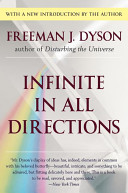Q
The hypothesis of {108} abstraction says that every living creature is characterized by a number Q which is a measure of the complexity of the creature. To measure Q, we do not need to know anything about the internal structure of the creature. Q can be measured by observing from the outside the behavior of the creature and its interaction with its environment. Q is simply the quantity of entropy produced by the creature's metabolism during the time it takes to perform an elementary response to a stimulus. "Entropy" is a jargon word meaning waste heat divided by temperature. By an elementary response, I mean a simple action such as moving when poked or yelling when hurt. When the quantity of entropy is expressed in bits of information, the natural unit of entropy according to the law of equivalence of entropy and information, the quantity Q becomes a pure number.
For a human being, Q turns out to be about 10^23, which is a rough measure of the amount of waste heat we have to generate in order to do anything at all. It measures the number of bits of information that must be processed to keep a person alive long enough to say, "Cogito, ergo sum." It is probably not an accident that Q happens also to be roughly equal to the number of large molecules in a human body. But the hypothesis of abstraction says that we can make general statements about life in the abstract, not knowing anything about its molecular structure, using the externally measured Q as a sufficient description of its hidden complexity. Complexity is an extensive quantity; that is to say, the complexity of a group of creatures is the sum of the complexities of the individuals in the group. The complexity that can be achieved by life in a given environment is ultimately proportional to the quantity of matter available for its use.
In addition to the hypothesis of abstraction, I make a much stronger assumption which I call the hypothesis of adaptability. The hypothesis of adaptability says that, given sufficient time, life can adapt itself to any environment whatever. This is certainly an exaggeration of the truth. But it is of interest to examine first the idealized case of perfect adaptability. Practical {109} limitations and qualifications can always be added later. The formal statement of the hypothesis of adaptability is then as follows. Suppose that we have two environments A and B with a sufficient supply of matter and energy but with different environmental conditions of temperature, pressure, chemistry and so on. If a creature of complexity Q can exist in A, then an equivalent creature with the same complexity Q can exist in B. The word "equivalent" means that the creature in B has the same behavior patterns as the creature in A. If one is intelligent, the other is equally intelligent. If one is conscious, the other is also conscious. If one of them can talk to its friends about the content of its consciousness, the other will describe in an equivalent language a subjectively identical consciousness.
The hypotheses of abstraction and adaptability have some similarity to the first and second laws of thermodynamics. They are simple statements of a qualitative nature, and yet they provide a foundation for a quantitative theory of cosmic ecology. I will not burden you with the mathematical details of the theory.
Notes:
Folksonomies: complexity quantification
Taxonomies:
/science/physics/thermodynamics (0.467152)
/art and entertainment/humor (0.445416)
/science/social science/philosophy (0.427731)
Keywords:
creature (0.928966 (negative:-0.037620)), elementary response (0.828886 (neutral:0.000000)), waste heat (0.818913 (negative:-0.652877)), living creature (0.783093 (negative:-0.265012)), complexity (0.777578 (positive:0.172304)), hypothesis (0.763921 (positive:0.277651)), subjectively identical consciousness (0.729624 (neutral:0.000000)), different environmental conditions (0.729428 (neutral:0.000000)), adaptability (0.712672 (positive:0.619366)), equivalent creature (0.706725 (negative:-0.367098)), quantity (0.658059 (positive:0.236600)), perfect adaptability (0.647424 (positive:0.783705)), hidden complexity (0.637662 (positive:0.470121)), extensive quantity (0.606573 (positive:0.587314)), abstraction (0.594451 (positive:0.244766)), sufficient description (0.585884 (positive:0.470121)), internal structure (0.585806 (neutral:0.000000)), entropy (0.582183 (positive:0.495506)), sufficient supply (0.567566 (positive:0.432094)), sufficient time (0.567394 (positive:0.318470)), natural unit (0.563612 (positive:0.514070)), rough measure (0.563440 (negative:-0.662011)), jargon word (0.561190 (negative:-0.643742)), idealized case (0.560625 (positive:0.783705)), simple action (0.558408 (negative:-0.520374)), large molecules (0.554871 (neutral:0.000000)), stronger assumption (0.551745 (positive:0.651850)), human body (0.545863 (neutral:0.000000)), equivalent language (0.545829 (neutral:0.000000)), pure number (0.544812 (positive:0.355024))
Concepts:
Thermodynamics (0.960426): dbpedia | freebase
Temperature (0.764249): dbpedia | freebase | opencyc
Heat (0.746395): dbpedia | freebase
Quantity (0.697605): dbpedia | freebase | opencyc
Scientific method (0.610686): dbpedia | freebase
Entropy (0.594645): dbpedia | freebase
Second law of thermodynamics (0.575251): dbpedia | freebase
Measurement (0.567143): dbpedia | freebase





